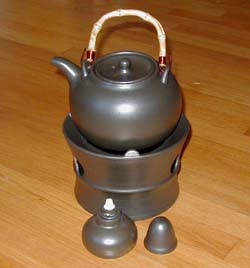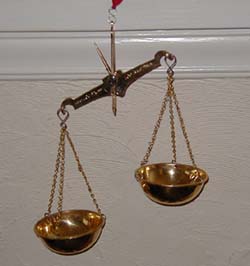Although I entitled this post My Independence Day Toys, it’s a lie. One of my new toys I got July 6th, the other I got the day after. But I figure it’s close enough, and I might run out of interesting ways to name articles when I get new stuff. Regardless, I have a couple of geeky bits of equipment that I wanted to share.
First, I got a set of things that I’m not sure how to name. I might call it a “kettle” and a “warmer” although the Chinese characters would translate to something more like “fire pot” or “hot pot” (ç«å£º) and “stove” (çˆ). Anyway, it’s a stand with an alcohol burner on which I can put the matching pot filled with water and it’ll keep it hot for me. Great for long gongfu tea sessions! (By the way, if you have a good name for this collection of items, leave it in the comments. My source wasn’t sure of the best way to say it in English.)
The interesting thing about the alcohol burner is that there’s no wick–the whole thing is made of clay. The bit that acts as the traditional fiber wick is like sandstone and porous enough to wick the denatured alcohol out of the base and burn with a gentle blue flame. Mmmm. Nice. (I did try it out, and while it’s good for keeping the water hot, it’s not very good at heating the water–the stove or my electric kettle is better for that.)
 My other new toy is a pre-weighted tea balance. Tea professionals often use scales like this to weigh out the perfect amount of tea for the standard brewing cup (it’s an item I like to call the “toothy cup” because the edge has a serrated section that allows you to strain the tea between cup and lid).
My other new toy is a pre-weighted tea balance. Tea professionals often use scales like this to weigh out the perfect amount of tea for the standard brewing cup (it’s an item I like to call the “toothy cup” because the edge has a serrated section that allows you to strain the tea between cup and lid).
This scale was made in India and came to the United States via Germany. Industry standard is 2.25 grams per 6 oz. of water and this is a lovely and elegant way of weighing out dry leaf for demonstrations, classes, and so forth. And between classes, it can hang from my fireplace mantle as a decoration (though I probably should check with my partner, Loren, before I leave yet more teaware hanging around…) Anyway, I love both the long tea-trade tradition the scales represent, as well as their combination of usefulness and beauty.







